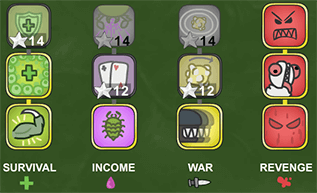


Whereas the vast majority of insect toxicology has emphasized understanding chemical lethality with the aim of pest management, pollinator toxicology is tasked with characterizing risk for the protection of beneficial insects. Honey bees ( Apis mellifera) are not only an economically important crop pollinator 6 but are also an alternative model system for examining the underlying concepts forming the human exposome. Invertebrates often share similar responses to chemical exposures and as a result have been used widely to model their effects on vertebrate development and reproduction 5. Additionally, chemical exposures of mature adults can result in perturbations of both male and female reproductive physiology as well as transgenerational epigenetic impacts 3. For example, exposure to endocrine disrupters during sensitive developmental windows has been linked to metabolic disturbances later in life, such as diabetes and obesity 3. Recently, an increased emphasis has been placed on the fetal origins of disease as it has been found that developmental conditions, including chemical exposures and undernutrition in utero, can dictate latent health outcomes during adulthood 3, 4. The exposome encompasses all of the chemical, physical, and biological agents experienced over a lifetime including during sensitive developmental stages 2. The combined contributions of the genome and environment on human health highlights the importance of characterizing exposures and their impacts in other organisms 1. These findings highlight how conditions during developmental can impact queens long into adulthood, and that colony-level pesticide exposure may do so indirectly. Interestingly, royal jelly from colonies exposed to treated pollen contained negligible pesticide residues, suggesting the indirect social consequences of colony-level pesticide exposure on queen quality. Moreover, we measured lower brood viability in colonies later established by queens reared in treated-pollen colonies. We found no difference in queen mating number across treatments. Conversely, colonies exposed to pesticide-treated pollen had a reduced capacity for viable queen production, and among surviving queens from these colonies we observed lower sperm viability. Our treated wax had a pesticide Hazard Quotient comparable to the average in beeswax from commercial colonies, and it had no measurable effects on queen phenotype. Following rearing, queens were open-mated and then placed into standard hive equipment in an “artificial swarm” to measure subsequent colony growth. We reared queens in beeswax cups with or without a pesticide treatment within colonies exposed to treated or untreated pollen supplement.
Using previously reported in-hive residues from commercial colonies, we examined how multi-pesticide exposure can influence honey bee ( Apis mellifera) queen health. Stressful conditions during development can have sub-lethal consequences on organisms aside from mortality.


 0 kommentar(er)
0 kommentar(er)
